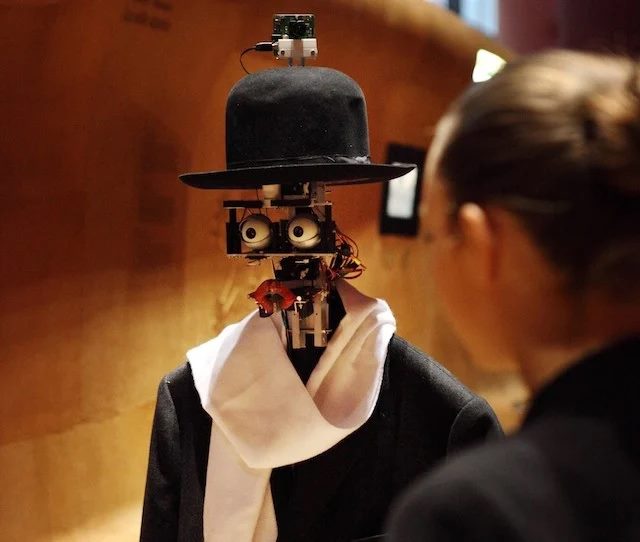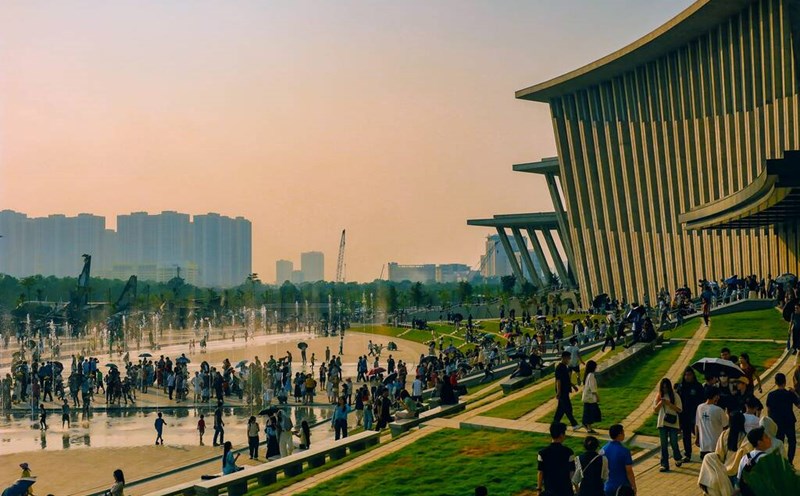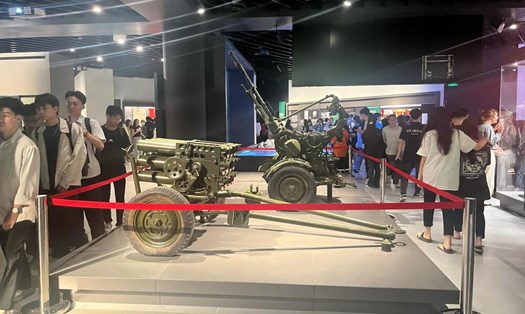Applications of AI in museums around the world
AI can be integrated into many different aspects, from the visitor experience to museum operations.
Ten years ago, the world was introduced to Pepper, a humanoid robot developed by Aldebaran Robotics (now SoftBank Robotics). Pepper answers questions from visitors and interacts with them using voice, gestures, and an interactive touchscreen. Six Pepper robots are present in three Smithsonian museums, and the organization plans to introduce more in the future.
In 2016, the Quai Branly Museum in Paris, France, introduced Berenson, an art critic robot created by anthropologist Denis Vidal and robotics engineer Philippe Gaussier. Berenson uses AI to record visitors’ reactions to art and develop its own aesthetic preferences. Through a camera in its eye, the robot records reactions, shares them with a computer, and adjusts its evaluation based on feedback received from visitors.

In addition to robots, AI is also being used as virtual guides in museums. In 2022, the Louvre Museum introduced “Leonardo,” an AI-powered virtual assistant that provides personalized tours and real-time information. AI enhances the visitor experience by being more interactive and informative.
Augmented reality (AR) combined with AI is also gaining traction. The British Museum’s AR app, launching in 2023, uses AI to create immersive experiences, allowing visitors to see historical artifacts in their original context through their smartphones or AR glasses.
In addition, many museums around the world use AI to increase accessibility and inclusion for visitors. For example, the IRIS+ chat bot at the Museum of the Future in Rio de Janeiro provides sign language translation for deaf visitors and audio description for the visually impaired.

In addition, AI is also applied in museums to manage libraries, transform customer service, create content, provide predictive analytics and process data in real time...
For example, GPT Chat creates interactive and personalized experiences, providing visitors with insights and answering their questions. Google Gemini provides predictive capabilities that help museums manage visitor flow, optimize exhibition arrangements, and predict maintenance needs.
AI also supports sentiment analysis, allowing museums to better understand visitor reactions to exhibitions and adjust accordingly. AI algorithms can categorize and tag artifacts, making them easier to find and access for both museum staff and the public.
This not only preserves the artifacts but also makes them more accessible to researchers and archaeology enthusiasts.
Application of technology in Vietnamese museums
Along with the development of the world, technology is also applied at different levels to attract visitors to museums in Vietnam. The application of digital technology in museum activities in Vietnam not only helps preserve and promote cultural heritage but also attracts the attention of the public, especially the young.
Typically, the National Museum of History is a pioneer in applying 3D virtual interactive technology to introduce exhibitions. Since 2013, the museum has used this technology for topics such as "Vietnamese Buddhist Cultural Heritage" and "Vietnamese Ancient Lamps", allowing the public to visit online and interact with artifacts in detail.
In 2022, the Ho Chi Minh City Museum of History will test the Batalis Robot model to explain and guide visitors. This robot is capable of projecting images and videos introducing the museum, artifacts and galleries, bringing a new experience to visitors.


In addition, many other museums in Vietnam such as the Vietnam Military History Museum, Hanoi Museum, Museum of Fine Arts... are also applying virtual reality and 3D technology to digitize artifacts and exhibition spaces, helping visitors to have new experiences and access information more conveniently.
Vietnam Fine Arts Museum is applying many technology products for display and exhibition such as iMuseum VFA multimedia explanation, 3D Tour, online art exhibition... In particular, the museum applies VAES Online Art Exhibition Space Solution to bring a new visiting experience.
At the same time, museums are also digitizing data to make archiving and teaching easier.
Challenges in approaching AI
To move towards applying advanced digital technologies, especially AI, museums in Vietnam still need a lot of research time and resources.
Museums are currently facing many challenges. First, the urgent issue is finding suitable and skilled human resources to develop digitalization. Many museums do not have specialized teams and have to cooperate with external units in the fields of technology, communications, etc.
For example, the Vietnam Fine Arts Museum has solved this problem by partnering with a technology company and sharing the profits. Some other museums apply the work-study model.
Second, the funding for digitization is huge, sometimes beyond the capacity of museums, especially local museums. Some museums have only digitized a small part, unable to carry out comprehensive and detailed implementation.
Currently, the technological potential in Vietnam has caught up with the global development trend. The most important thing is to choose the right solution for each object and expertise of the museum.
In the context of rapid development of artificial intelligence AI, this can become a powerful tool to help museums simulate, classify, and store information and artifacts. AI is considered the key to help museums become more vivid, intuitive, and closer to the public.
If AI can be applied in the process of innovation, digitization of information, artifacts... in operations, museums in Vietnam will quickly achieve spectacular changes, attracting a large number of visitors.






